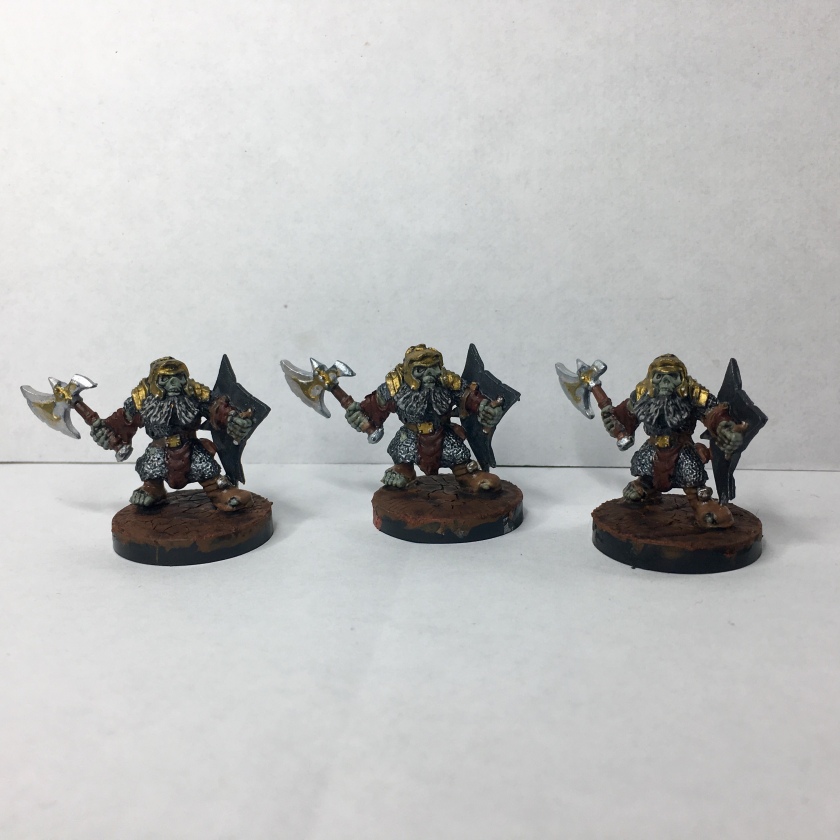I’ve got a backlog of figures to post and then I’m on a two month painting hiatus for the summer while I travel. I’ve been pushing to finish up the Ahmut’s Legion faction and I’m almost there, but it’s clear I won’t make it until the fall. I have left the Gallowsgaunt (which would be a quick job), two different half-orc figures (three, actually, more on that later…), and the zombie minotaur, which will be complicated. I’ll probably finish by September or early October now.
First up is the Skeletal Equiceph. I’d done one of these months back and then lost momentum with the other. Frankly, I’m glad I waited. It only took me a couple of days to paint and I think it’s pretty clear that I’m getting better at this.


The figure on the right is the old one. The sculpt itself is great. It’s a sturdy figure that feels great in the hand, almost like a chess piece. There’s only one element to glue: the glaive and hands. I’m not sure what I did wrong the first time; the handle is bent in a weird way. The new one looks better though.
One of the things that makes this so much fun to paint is the overlapping textures and clear demarcations between them. It’s an extremely clean sculpt skillfully rendered. The figure itself is one that I think was invented for the Chainmail game. I haven’t checked old Monster Manuals or Greyhawk sourcebooks, but I think I recall reading that the designers wanted a unique undead type for the game. The result is this: a kind of backward centaur. It’s meant to be an extinct race discovered by the faction and resurrected as an undead army. The newer, plastic figures that were made after Chainmail was cancelled retains the figure, but the sculpt is cartoonish where this version is sharp and clear:
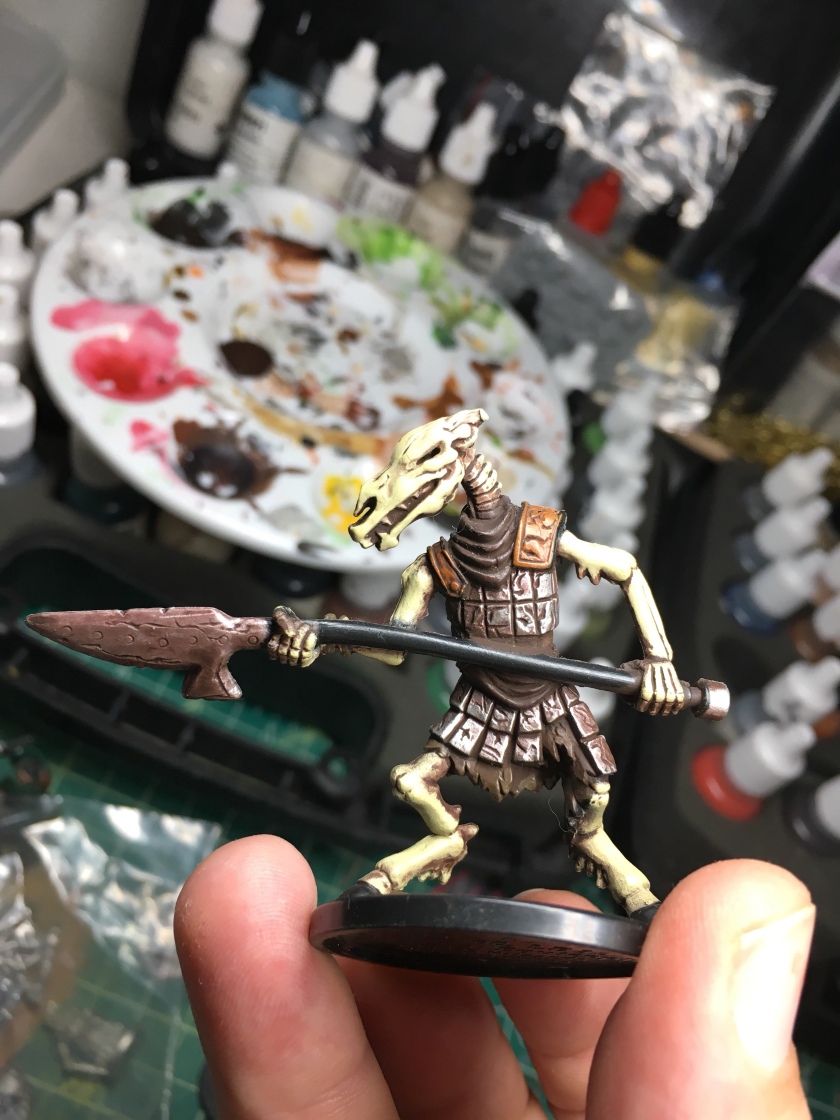
I painted it using Vallejo metallics. I almost never use the Reaper ones now, the difference in quality is so stark. The leather undercoat is Reaper chestnut brown and the fur is stormy gray with a lighter drybrush to bring up the texture.
The bone itself is Reaper dirty bone. The difference between the final versions is a function of me figuring out how to use the citadel technical paints I’ve posted about earlier. On the newer version I was much more liberal and strategic in applying Typhus Corrosion, which is a textured gray paint that gives the exact impression of encrusted dirt. It’s amazing stuff and it works everywhere. I used it on both figs to muck up the blade and armor. On the newer one, I also used it for the bone to add another layer of texture and grit. I was going for a just-dug-from-a-grave look.
The other technical paint, really the reason I bought them in the first place, is Nihilakh Oxide. This is wonderful to work with. I played around with verdigris effects on the armor of the Drazens Orc Gangfighters. There I used a simple green wash and the effect was muted to the point of invisible. I read a few tutorials and thought about using alcohol and raw pigments like I did for the rust on the skeletal orcs a few months ago. But then I found Nihilakh Oxide and I honestly don’t know why anyone would use anything else.
The method is to lay down a layer of Typhus Corrosion in areas you want a buildup of verdigris. Then you go over it with Nihilakh Oxide to tint and add more texture. My first try was too heavy and came out a little cartoonish.

Not bad, but the second try looks amazing, I think. Really realistic:

I may go back and use it on the Orc Gangfighters, though that’s obviously a low priority at the moment.
So there you have it: Skeletal Equicephs. One of the simplest, most elegant, most creative sculpts in the Chainmail line. Next up: the Shadow Priest…



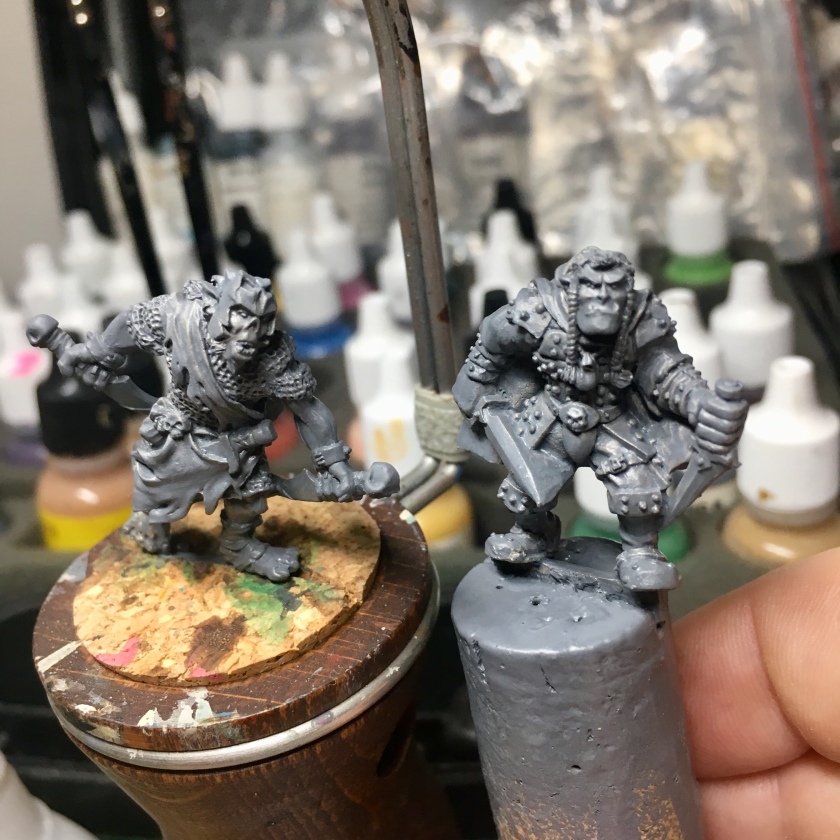




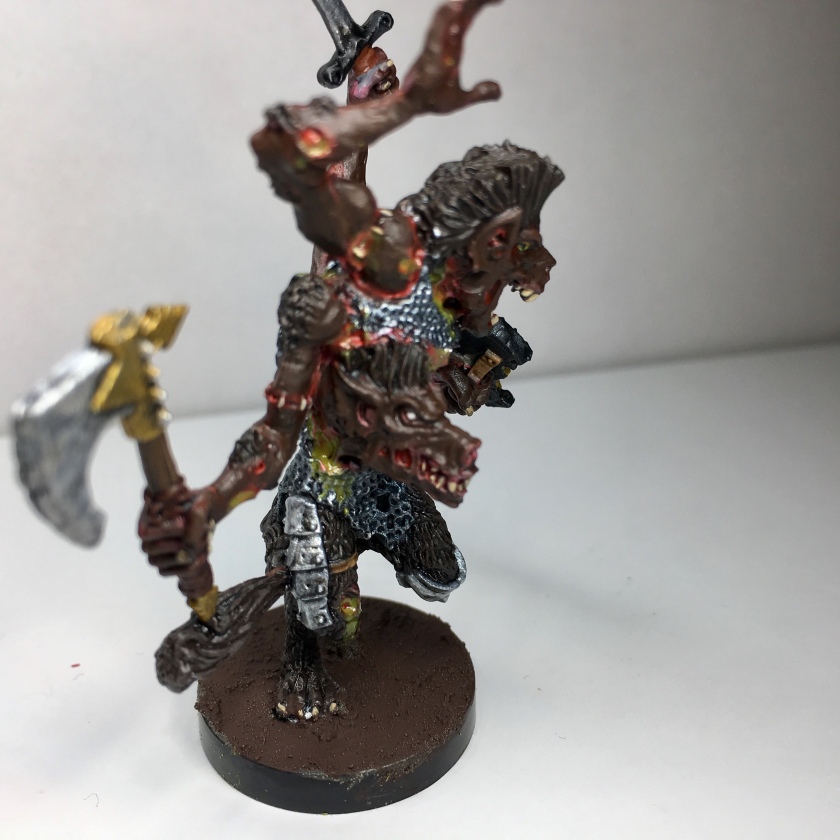
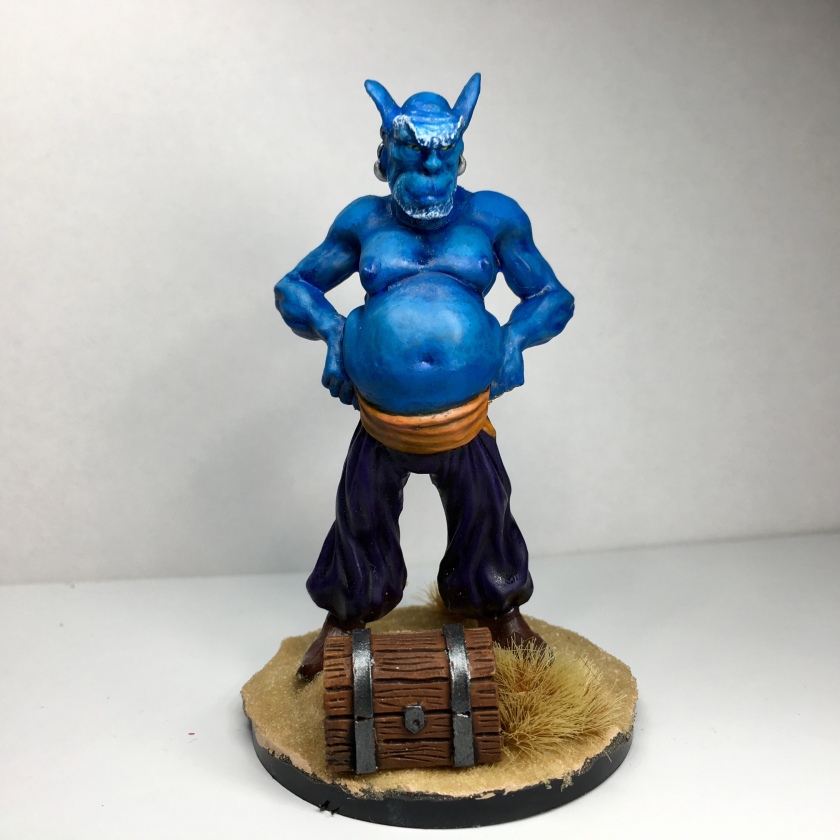


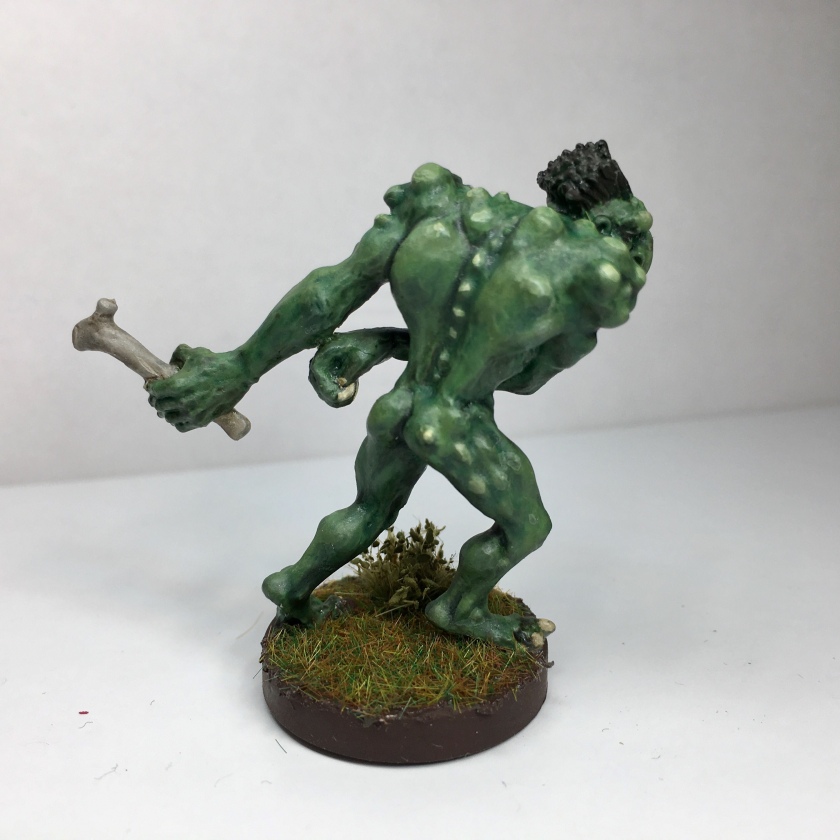




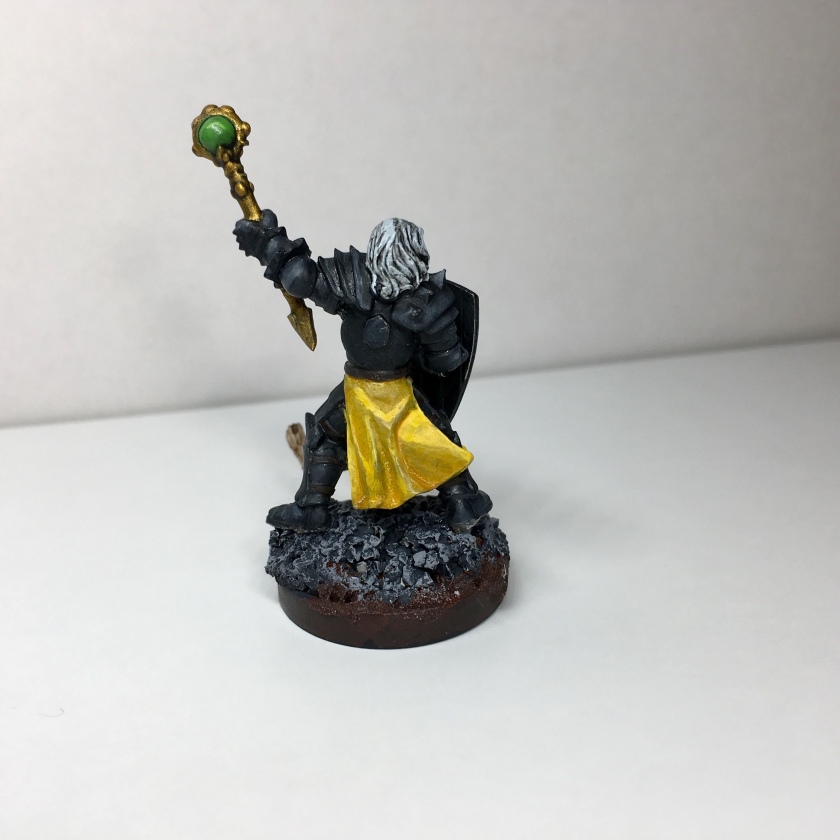
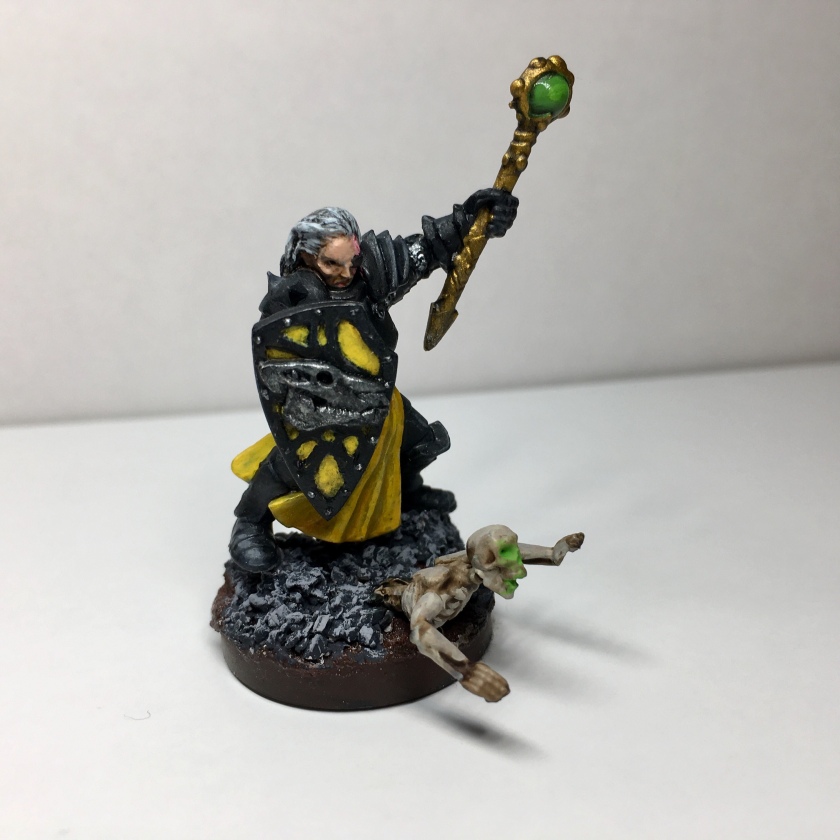







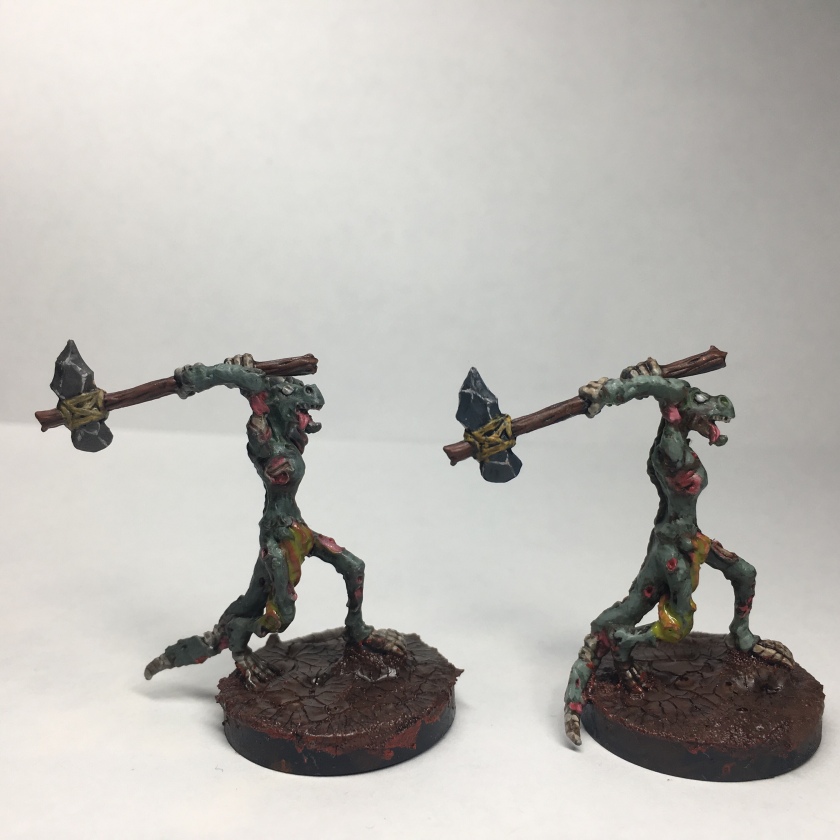
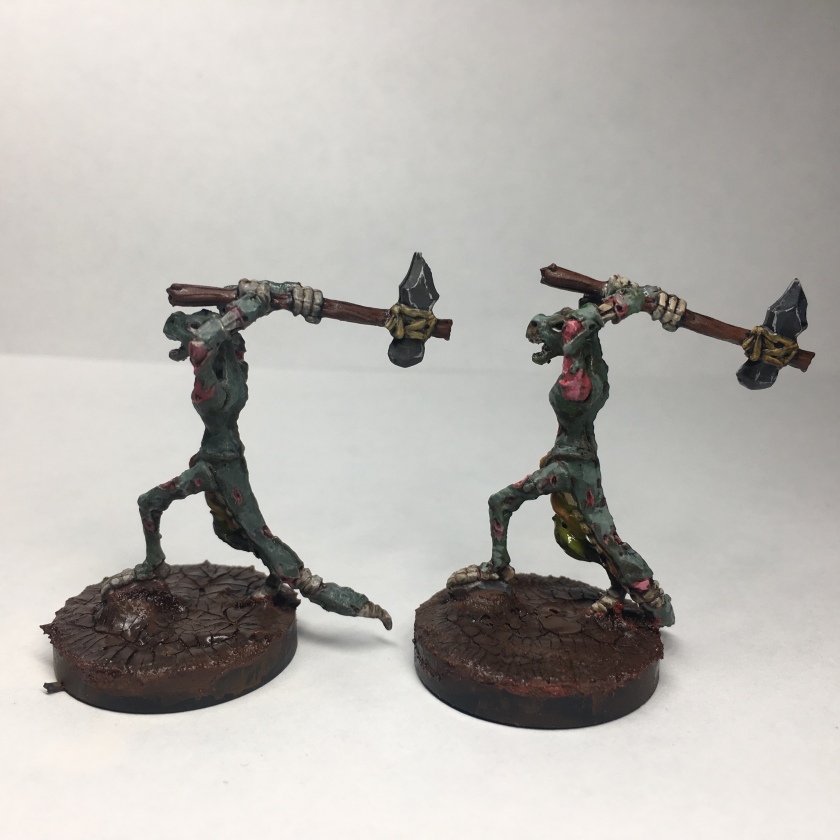

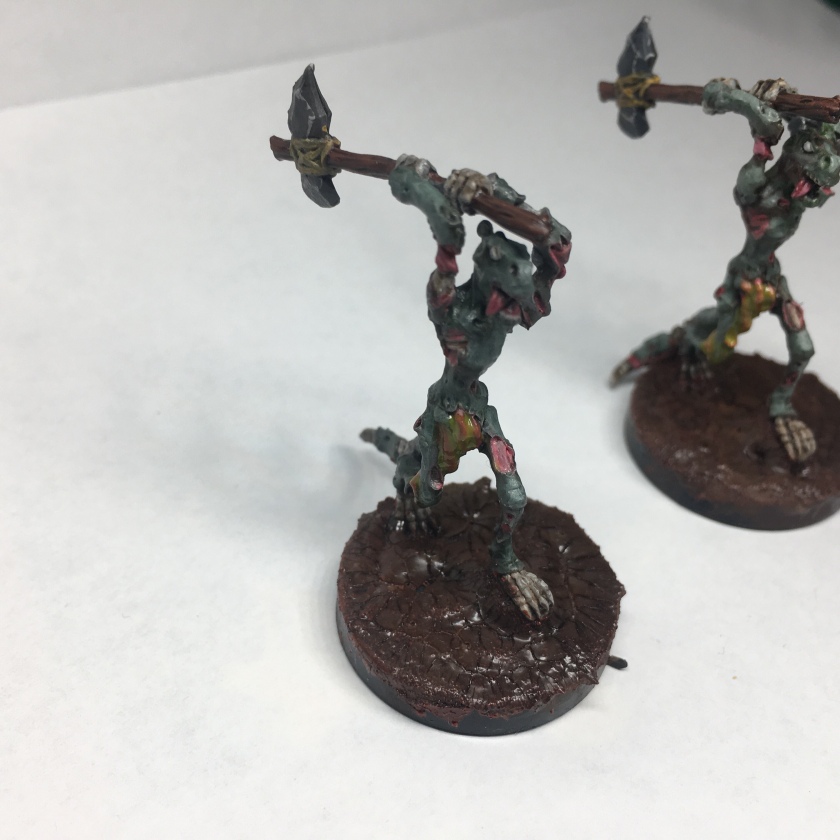



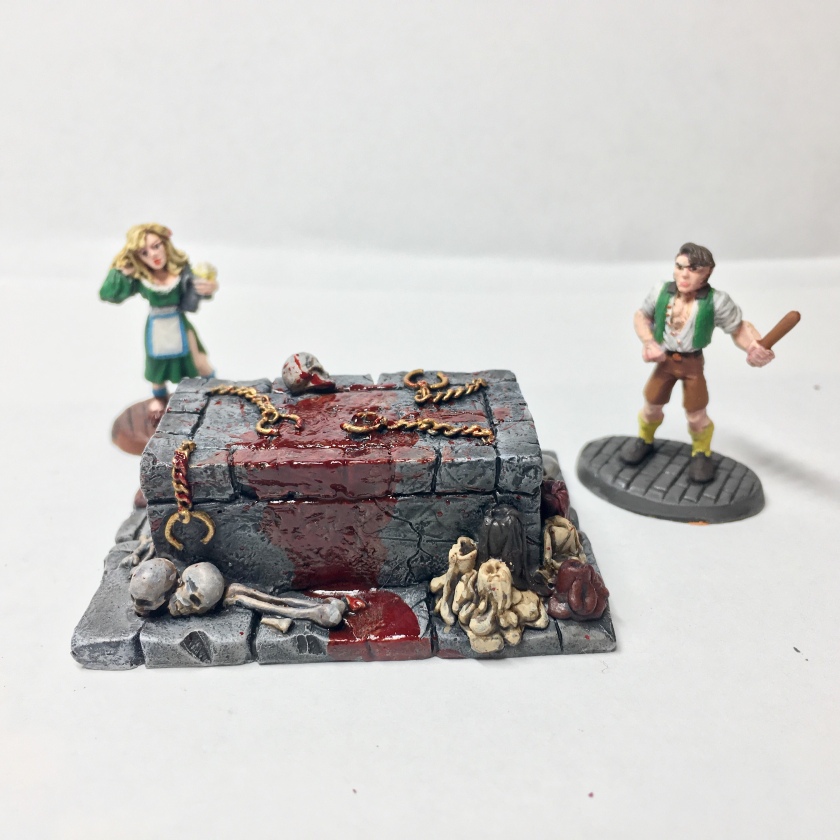

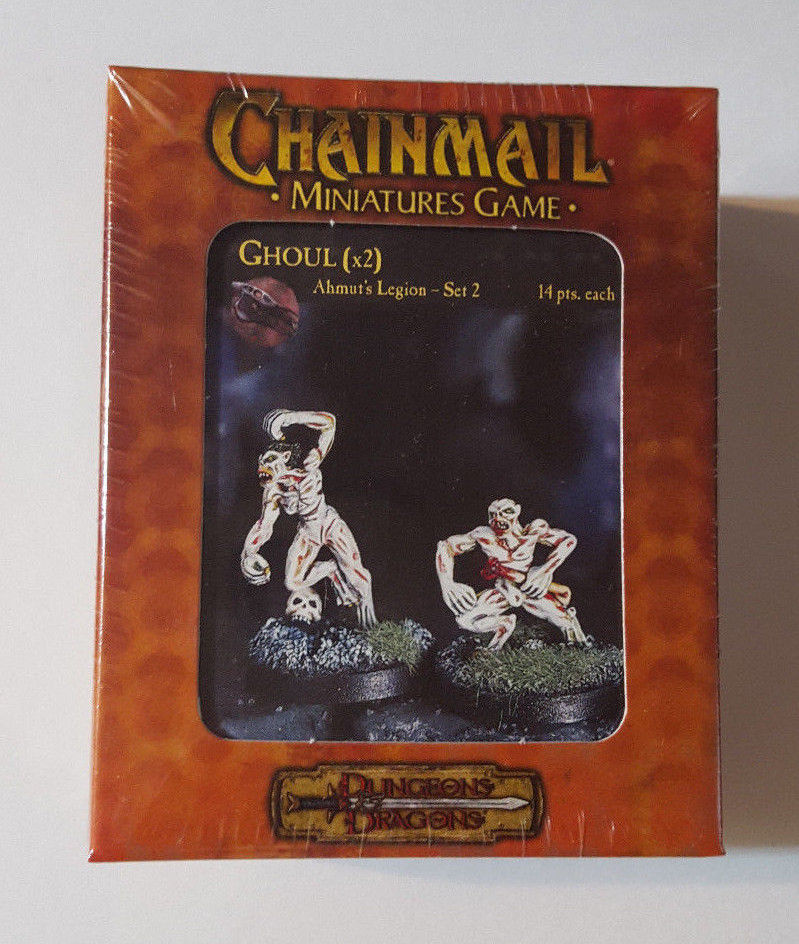




 In the meantime, though, I’ve finally re-primed the Hill Giant and plan on finally finishing up the Drazen’s Horde run. Depending on if I can get him right the first time or not, I hope to have that done by mid-week. We’ll see.
In the meantime, though, I’ve finally re-primed the Hill Giant and plan on finally finishing up the Drazen’s Horde run. Depending on if I can get him right the first time or not, I hope to have that done by mid-week. We’ll see.










